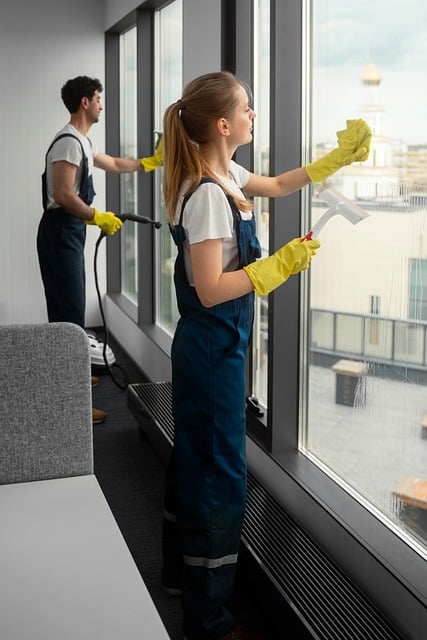Cleaning Work: Global Trends and Features
The cleaning industry represents a vital sector within the global economy, employing millions of workers across residential, commercial, and industrial settings. As societies evolve and technological advancements continue, cleaning work has undergone significant transformations in recent years. This article examines the current landscape of cleaning work worldwide, including common tasks, valued qualities in cleaning professionals, working conditions across different regions, and emerging trends reshaping the industry.

How is the cleaning sector changing worldwide?
The global cleaning sector is experiencing notable shifts driven by several factors. Technology integration stands at the forefront of this transformation, with robotic vacuum cleaners, automated floor scrubbers, and other smart cleaning devices becoming increasingly common in both commercial and residential settings. These technologies are not replacing human workers entirely but rather changing the nature of cleaning jobs by eliminating some repetitive tasks while creating new roles focused on equipment operation and maintenance.
Sustainability has emerged as another powerful force reshaping the cleaning industry. The growing environmental consciousness has prompted a shift toward green cleaning practices, including the use of eco-friendly products, water conservation techniques, and waste reduction strategies. Many cleaning companies now market themselves based on their environmental credentials, responding to increasing demand from consumers and businesses for sustainable services.
The COVID-19 pandemic dramatically elevated the importance of professional cleaning services, transforming them from background operations to essential frontline work. This heightened awareness of cleanliness and sanitation continues to influence the sector, with increased emphasis on disinfection protocols, touchpoint cleaning, and visible daytime cleaning to reassure building occupants.
What tasks are usually part of cleaning work?
Cleaning work typically encompasses a range of tasks that vary based on the setting. In residential cleaning, professionals commonly perform dusting, vacuuming, mopping, bathroom sanitization, kitchen cleaning, and occasional deep cleaning of carpets or upholstery. Commercial cleaning often involves similar tasks but on a larger scale, with additional responsibilities like waste management, window washing, and maintaining common areas.
Specialized cleaning roles include more technical tasks. Hospital and healthcare facility cleaners follow strict infection control protocols, using hospital-grade disinfectants and adhering to detailed cleaning sequences designed to minimize cross-contamination. Industrial cleaners may operate heavy machinery to clean manufacturing equipment, manage hazardous waste, or perform high-pressure washing of facilities.
Post-construction cleaning represents another specialized niche, involving the removal of building debris, dust, paint residue, and adhesives. Similarly, disaster restoration cleaning requires specialized knowledge of handling water damage, fire damage, or biohazard remediation. Each of these specialized fields requires specific training, equipment, and safety protocols beyond general cleaning skills.
What qualities are valued in the cleaning field?
Employers and clients in the cleaning industry consistently value several key qualities in cleaning professionals. Reliability and trustworthiness rank among the most important attributes, as cleaners often work in homes and businesses when occupants are absent and may handle valuable items or sensitive information. This explains why background checks are standard practice for many cleaning companies when hiring staff.
Attention to detail distinguishes exceptional cleaning professionals from average ones. The ability to notice and address often-overlooked areas—baseboards, light fixtures, under furniture—creates a truly comprehensive cleaning result. This meticulous approach is particularly valued in settings like luxury hotels, healthcare facilities, and high-end residences.
Physical stamina remains essential for cleaning work, which often involves continuous movement, lifting, bending, and standing for extended periods. Time management skills are equally important, especially for cleaners who must complete multiple locations within tight schedules. The capacity to work independently with minimal supervision is highly prized, as many cleaning professionals operate with considerable autonomy once trained.
Adaptability has become increasingly important as cleaning environments evolve. Professionals must adjust to new cleaning protocols, learn to operate emerging technologies, and respond appropriately to unexpected situations like biohazards or special cleaning requests.
What working conditions appear in different countries?
Working conditions for cleaning professionals vary significantly across different countries and regions. In Northern European countries like Sweden, Denmark, and Finland, cleaners typically enjoy stronger labor protections, higher wages, formalized training programs, and greater professional recognition. These countries often approach cleaning as a technical profession requiring proper education rather than unskilled labor.
In contrast, developing economies frequently offer fewer protections for cleaning workers. Informal employment arrangements, limited access to benefits, lower wages, and minimal regulatory oversight characterize cleaning jobs in many regions. These conditions can lead to exploitation and unsafe working environments.
The United States presents a mixed picture, with unionized janitors in some urban areas securing better wages and benefits, while non-unionized workers often receive minimal compensation and limited protections. The prevalence of immigrant labor in the U.S. cleaning industry introduces additional complexities related to documentation status and vulnerability to exploitation.
Working hours also differ significantly across regions. In many European countries, daytime cleaning has become increasingly common, offering more standard working hours. However, in North America and parts of Asia, overnight cleaning remains predominant in commercial settings, requiring workers to adapt to challenging schedules that can affect work-life balance and health.
Conclusion
The global cleaning industry continues to evolve in response to technological advancements, environmental concerns, and shifting societal expectations. While core cleaning tasks remain relatively consistent across different settings, the methods, tools, and standards are transforming. The qualities valued in cleaning professionals—reliability, attention to detail, physical stamina, and adaptability—reflect the essential nature of this work in maintaining healthy, functional spaces.
Working conditions vary dramatically across different regions, highlighting disparities in how societies value and regulate cleaning work. As the industry continues to professionalize and adapt to new challenges, there remains significant opportunity to improve standards and recognition for this essential workforce that maintains the spaces where we live, work, and gather.




